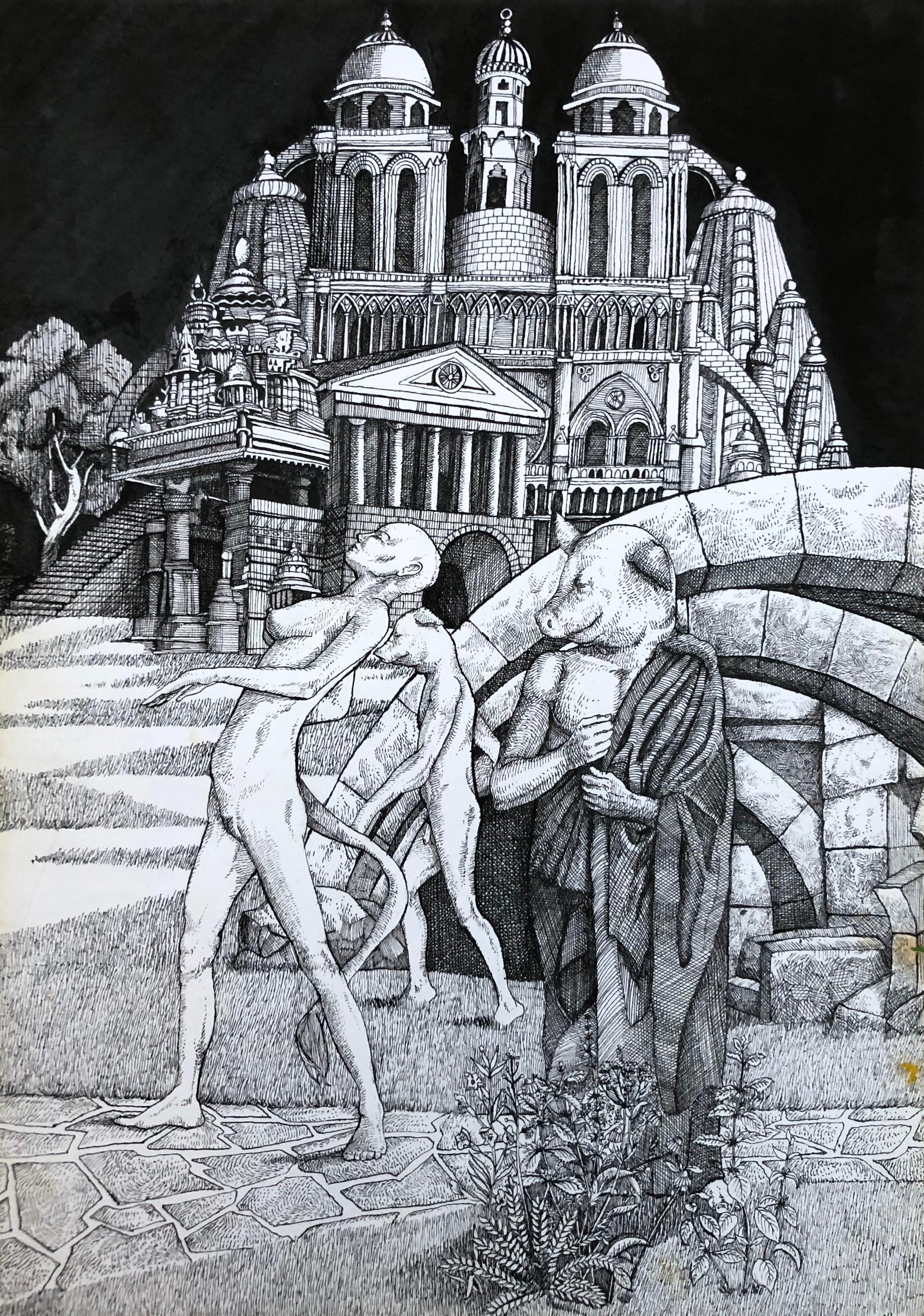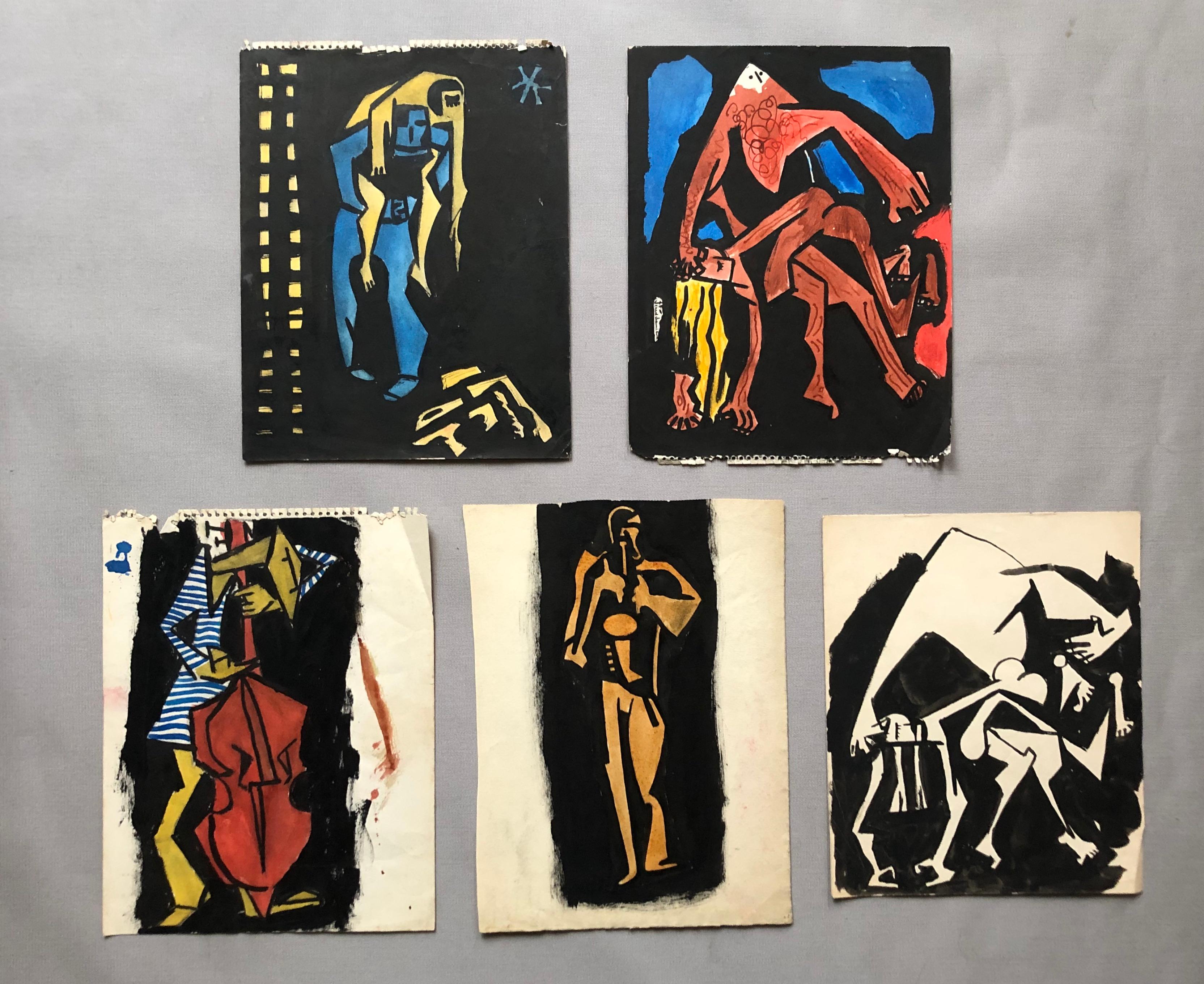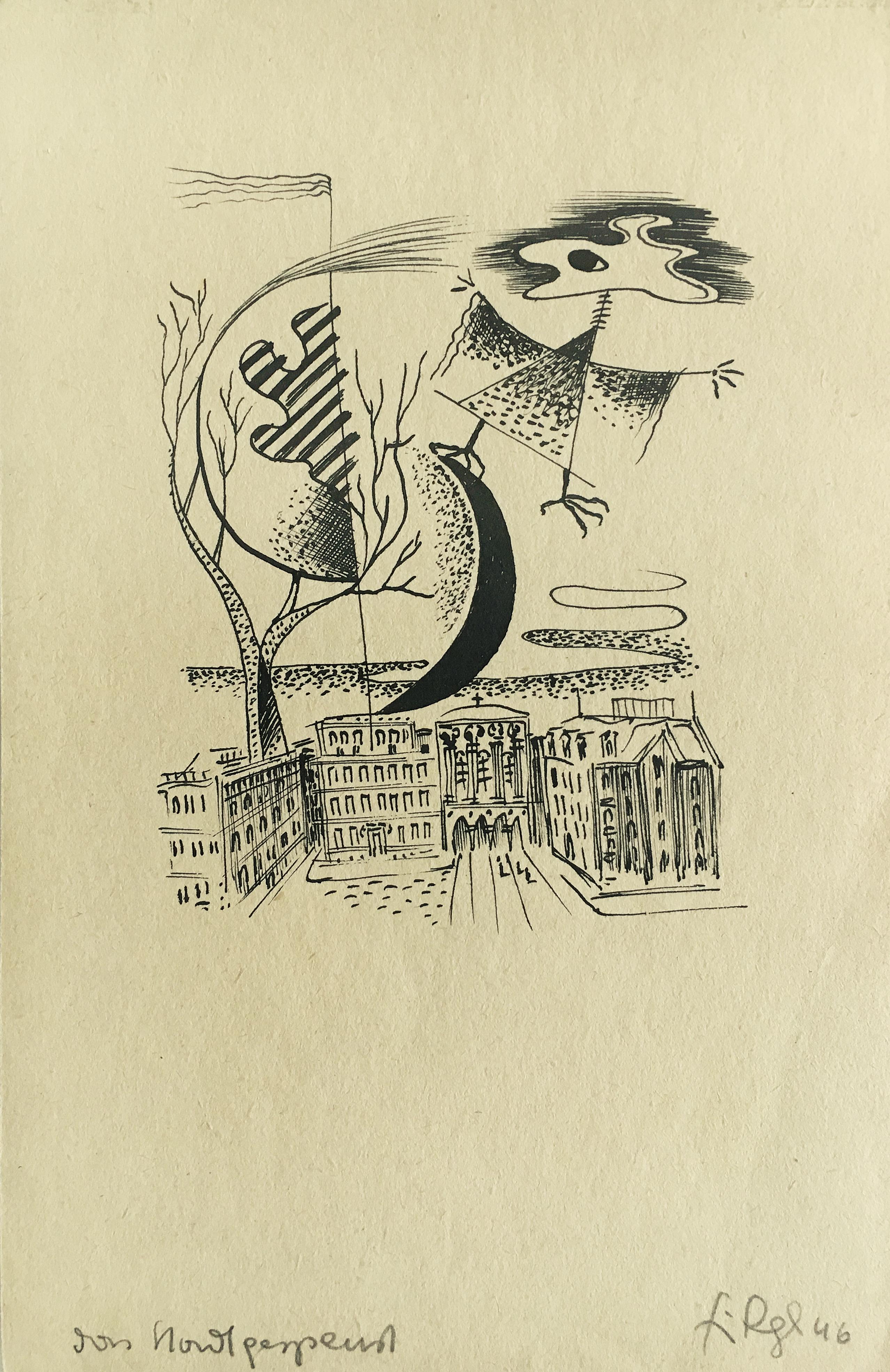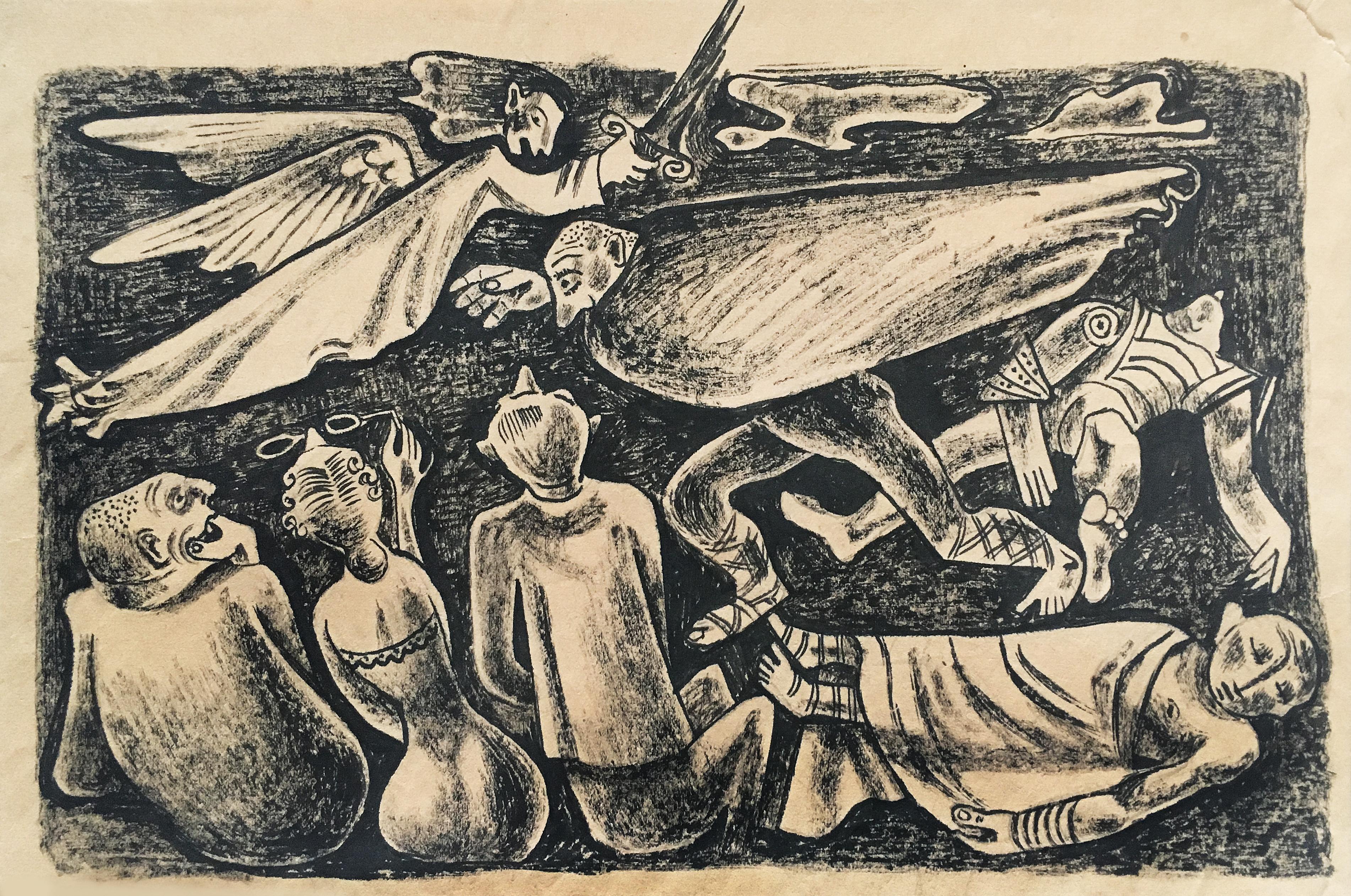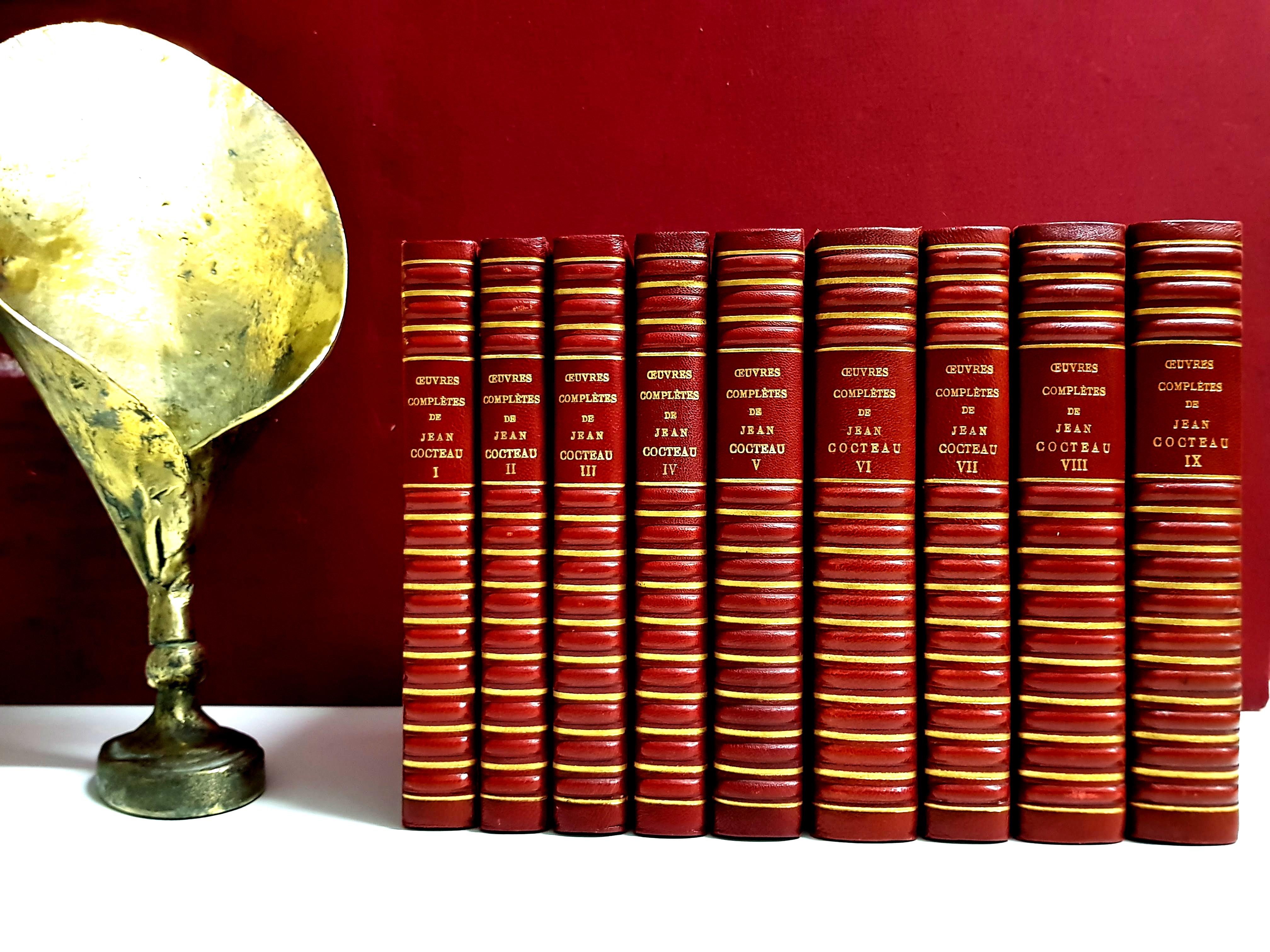Items Similar to Etude d'une Maraîchère coupant l'herbe by Paulémile Pissarro - Ink on Paper
Want more images or videos?
Request additional images or videos from the seller
1 of 5
Paulémile PissarroEtude d'une Maraîchère coupant l'herbe by Paulémile Pissarro - Ink on Paper
About the Item
*UK BUYERS WILL PAY AN ADDITIONAL 20% VAT ON TOP OF THE ABOVE PRICE
Etude d'une Maraîchère coupant l'herbe by Paulémile Pissarro (1884 - 1972)
Ink on paper
22.6 x 30.9 cm (8 ⁷/₈ x 12 ¹/₈ inches)
Stamped lower left, Paulémile-Pissarro
This work is accompanied by a certificate of authenticity by Lélia Pissarro.
Artist's Biography
Paulémile Pissarro, Camille Pissarro’s youngest son, was born in Éragny in 1884 where he was brought up within the creatively fertile environment of his family home and, encouraged by his father, began drawing at an early age. Paulémile’s godfather was Claude Monet, who became his teacher and legal guardian after Camille’s death in 1903.
In 1905 Paulémile exhibited at the Salon des Indépendants for the first time. Although his father had supported Paulémile’s desire to be an artist, his mother was eager for him to learn a more practical trade. Therefore in 1908 he put aside his artistic pursuits to work as an automobile mechanic and test-driver, then later as a lace and textile designer, allowing him only a limited time to paint. Paulémile only fully dedicated himself to painting following a letter from his brother Lucien in London, who wrote to invite him to take part in an exhibition held in London. Subsequent to the successful sale of a number of watercolours he had sent over, the young artist became inspired to leave the textile factory and pursue a career in art.
By the 1920s Paulémile had become an established Post-Impressionist artist in his own right, spending the summer months escaping from Paris on painting trips with fellow artists Kees Van Dongen, Raoul Dufy, Maurice de Vlaminck and André Dunoyer de Segonzac. In 1922 Paulémile purchased a house in Lyons-la-Forêt, a small village within the region of his hometown of Éragny and Giverny, where he moved in with his first wife Berthe Bennaiche. During this time, he developed a form of Cubism inspired by Paul Cézanne whom he dearly admired, creating some wonderful paintings of the river Eure and its surrounding villages. There he formed a close friendship with his neighbour, the famous Art Deco designer Émile-Jacques Ruhlmann, who designed a stunning Art Deco studio for Paulémile adjacent to his house.
In 1930 he visited and fell in love with the Swiss Normandy area in the Calvados region, in particular the River Orne which runs through the valley adjacent to the villages of Clécy and St. Remy. The combination of rolling hills, bold meadows and the calm river weaving its way through the landscape offered Paulémile a new burst of inspiration. With his second wife Yvonne Beaupel, Paulémile eventually moved to Clécy in 1935, where he would remain for the rest of his life. Of their three children, both H. Claude and Yvon also became artists.
With his house backing on to the river Orne, Paulémile developed a new way of working using a boat as a floating studio, where he spent countless days painting the calm waters from between the riverbanks. Here the influence of his godfather Claude Monet became apparent, particularly in Paulémile’s depiction of water, which was revolutionised by the Impressionist icon. He also applied Monet’s lessons in horticulture to the creation of an abundant garden, offering him many more motifs for his new paintings. Alongside these river landscapes, he also painted the neighbouring hay fields, various snow scenes, some interiors and still lives. The most ambitious work in his oeuvre was a fresco painted on all four walls of his own dining room, depicting the adjacent river in which he includes family members, neighbours and friends.
In 1967 Paulémile had his first one-man show in the United States at Wally Findlay Galleries in New York. This led to widespread recognition and a degree of professional success that few Pissarro artists knew during their lifetime. Since his death in 1972, Paulémile remains one of the best known of Camille’s sons.
- Creator:Paulémile Pissarro (1884 - 1972, French)
- Dimensions:Height: 8.9 in (22.6 cm)Width: 12.17 in (30.9 cm)
- Medium:
- Period:
- Condition:
- Gallery Location:London, GB
- Reference Number:1stDibs: LU261212622812
About the Seller
5.0
Recognized Seller
These prestigious sellers are industry leaders and represent the highest echelon for item quality and design.
Platinum Seller
These expertly vetted sellers are 1stDibs' most experienced sellers and are rated highest by our customers.
Established in 1964
1stDibs seller since 2015
95 sales on 1stDibs
Typical response time: 4 hours
Associations
Society Of London Art Dealers
- ShippingRetrieving quote...Ships From: London, United Kingdom
- Return PolicyA return for this item may be initiated within 7 days of delivery.
More From This SellerView All
- Watercolour artwork by Ludovic Rodo Pissarro titled 'Le Moulin de la Galette'By Ludovic-Rodo PissarroLocated in London, GBLe Moulin de la Galette by Ludovic Rodo Pissarro (1878 - 1952) Watercolour and ink on paper 21 x 15.7 cm (8 ¼ x 6 ¼ inches) Signed with Estate stamp and inscribed Elisabeth lower ri...Category
Early 1900s Post-Impressionist Figurative Drawings and Watercolors
MaterialsPaper, Ink, Watercolor
- Le corp de ferme by Paulémile Pissarro - WatercolourBy Paul Emile PissarroLocated in London, GB*UK BUYERS WILL PAY AN ADDITIONAL 20% VAT ON TOP OF THE ABOVE PRICE Le corp de ferme by Paulémile Pissarro (1884-1972) Watercolour, ink and charcoal on paper 29.7 x 46.8 cm (11 ³/₄ ...Category
1910s Post-Impressionist Figurative Drawings and Watercolors
MaterialsPaper, Charcoal, Ink, Watercolor
- Les Andelys by Ludovic-Rodo Pissarro - Landscape watercolourBy Ludovic-Rodo PissarroLocated in London, GBLes Andelys by Ludovic-Rodo Pissarro (1878-1952) Watercolour and ink on paper 28 x 38 cm (11 x 15 inches) Inscribed, dated and signed lower left, Les Andel...Category
1920s Post-Impressionist Figurative Drawings and Watercolors
MaterialsPaper, Ink, Watercolor
- La Maison Rose, Les Andelys by Ludovic-Rodo Pissarro - Landscape, watercolourBy Ludovic-Rodo PissarroLocated in London, GB*UK BUYERS WILL PAY AN ADDITIONAL 20% VAT ON TOP OF THE ABOVE PRICE La Maison Rose, Les Andelys by Ludovic-Rodo Pissarro (1878-1952) Watercolour, ink and ...Category
1930s Post-Impressionist Figurative Drawings and Watercolors
MaterialsPaper, Ink, Watercolor, Pencil
- Les Danseuses by Ludovic-Rodo Pissarro - WatercolourBy Ludovic-Rodo PissarroLocated in London, GB*UK BUYERS WILL PAY AN ADDITIONAL 20% VAT ON TOP OF THE ABOVE PRICE Les Danseuses by Ludovic-Rodo Pissarro (1878-1952) Watercolour ink on paper 18 x 25 c...Category
Early 1900s Post-Impressionist Figurative Drawings and Watercolors
MaterialsPaper, Ink, Watercolor
- Etude de Chiens by Paulémile Pissarro - Ink on paperLocated in London, GBSOLD UNFRAMED *UK BUYERS WILL PAY AN ADDITIONAL 20% VAT ON TOP OF THE ABOVE PRICE Etude de Chiens by Paulémile Pissarro (1884 - 1972) Ink on paper 23 x 31 cm (9 x 12 ¹/₄ inches) S...Category
Mid-20th Century Post-Impressionist Animal Drawings and Watercolors
MaterialsPaper, Ink
You May Also Like
- Drawing Signed Guillot, Surrealist SchoolLocated in SAINT-OUEN-SUR-SEINE, FRInk drawing signed Guillot. Surrealist school. Dated on the back August 1980. Small dirt on the bottom right. 29.5 x 21 cmCategory
1980s Surrealist Figurative Drawings and Watercolors
MaterialsPaper, Ink
- Gerard Charriere, Set Of Five SketchesLocated in SAINT-OUEN-SUR-SEINE, FRGerard CHARRIERE (1935) Suite of five sketches. Ink and watercolor on paper. A single signed sketch. Folds, stains, small tears depending on the sheets. ...Category
1980s Figurative Drawings and Watercolors
MaterialsPaper, Watercolor, Ink
- GeldwäscherBy Simon VithLocated in Wien, 9Drawing is the central medium in the works of Simon Vith. The immediacy of drawing and the narrative aspect, as well as the concentration on one line, inspire him. The deliberate use...Category
21st Century and Contemporary Contemporary Figurative Drawings and Water...
MaterialsInk, Paper
- Das Mondgespenst / The ghost of the moonLocated in Wien, 9Franz Rogler (1921 -1994) studied wood and stone sculpture with Wilhelm Gösser at the Graz School of Applied Arts and attended the master class for painting with Rudolf Szyszkowitz. During his studies he was drafted for military service and, together with fellow artist Hans Fronius, was deployed as a war painter in Austria, Germany, Italy, the former Yugoslavia, Greece and Russia. During this time he completed studies at the Academy in Zagreb and organised exhibitions in Austria. In 1944 he deserted and managed to escape to Switzerland, where he settled in Basel after his internment and came into contact with the Swiss Surrealists of "Group 33" and with the artists Hans Arp, Max Ernst and Meret Oppenheim through his friend Regula Weilenmann. After the end of the war, he studied at the Basel Art School with Walter Bodmer and Heinrich Müller, which introduced him to Constructivist art. In 1947 Rogler returned to Graz and became a member of the Graz Secession. From 1948 to 1950 he studied at the Vienna Academy with Albert Paris Gütersloh, before returning to Graz as a freelance artist in 1950. In 1953 he received the Art Prize of the City of Graz and his works were published in the first issue of the "Surrealist Publications" edited by Edgar Jené and Paul Celan...Category
1940s Surrealist Figurative Drawings and Watercolors
MaterialsPaper, India Ink
- Du entgehst der Strafe nicht / You do not escape the punishmentLocated in Wien, 9Franz Rogler (1921 -1994) studied wood and stone sculpture with Wilhelm Gösser at the Graz School of Applied Arts and attended the master class for painting with Rudolf Szyszkowitz. During his studies he was drafted for military service and, together with fellow artist Hans Fronius, was deployed as a war painter in Austria, Germany, Italy, the former Yugoslavia, Greece and Russia. During this time he completed studies at the Academy in Zagreb and organised exhibitions in Austria. In 1944 he deserted and managed to escape to Switzerland, where he settled in Basel after his internment and came into contact with the Swiss Surrealists of "Group 33" and with the artists Hans Arp, Max Ernst and Meret Oppenheim through his friend Regula Weilenmann. After the end of the war, he studied at the Basel Art School with Walter Bodmer and Heinrich Müller, which introduced him to Constructivist art. In 1947 Rogler returned to Graz and became a member of the Graz Secession. From 1948 to 1950 he studied at the Vienna Academy with Albert Paris Gütersloh, before returning to Graz as a freelance artist in 1950. In 1953 he received the Art Prize of the City of Graz and his works were published in the first issue of the "Surrealist Publications" edited by Edgar Jené and Paul Celan...Category
1940s Surrealist Figurative Drawings and Watercolors
MaterialsInk, Paper
- Exceptional set of complete works, dedicated, with 8 original endpage drawingsBy Jean CocteauLocated in Collonge Bellerive, Geneve, CHJean Cocteau Exceptional copy of the complete works in 9 volumes, dedicated to Jacques Fonson, 8 with original endpage drawings Half bound in red morocco with gold lettering 8 volum...Category
1940s Surrealist Figurative Drawings and Watercolors
MaterialsGold Leaf
Recently Viewed
View AllMore Ways To Browse
Watercolor Roses S H
Aesthetic Revival Watercolor
Knife Wrestlers
Philippe Stark Coco
Aurelio Bulzatti
Howard Tangye Studio
Miniature Ink Drawing
Le Chanh
Sacred Scene Original Ink And Watercolor 18th Century
Lady Dior 95 22
Watercolor Cardinals
Cartier Positive Negative Earrings
Christine Dior 1960s
Giovanni Gallo Pompei
Knute Stiles
Louis Vuitton At Saks Boston
Maurice Beaton
R Wong
